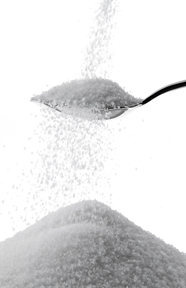This blog was written by Mechelle Meadows. Meet our blogging fitness specialists at the NIFS website.
With all of our corporate fitness centers’ strides toward healthy eating, maintaining an ideal weight, and preventing metabolic diseases such as type II diabetes, it’s no wonder that artificial  sweeteners like sucralose (Splenda), aspartame (Equal or NutraSweet), and saccharin (found in some diet sodas and chewing gum) became an overnight success. With claims like “as sweet as sugar, with no calories or insulin surge,” they sound like a great solution to staying within a low-calorie or low-sugar diet while still feeding that sweet tooth.
sweeteners like sucralose (Splenda), aspartame (Equal or NutraSweet), and saccharin (found in some diet sodas and chewing gum) became an overnight success. With claims like “as sweet as sugar, with no calories or insulin surge,” they sound like a great solution to staying within a low-calorie or low-sugar diet while still feeding that sweet tooth.
Does Splenda Have Adverse Side Effects?
Let’s take a look at the most popular of these, Splenda, to examine any possible health risks. Sucralose is 600 times sweeter than table sugar and is not broken down by the human body. So most of the molecules are not even absorbed by the gastrointestinal tract, but rather excreted.
According to the Sucralose Toxicity Information Center, a wide range of adverse side effects have been reported by Splenda users; however, these symptoms mainly impacted those people who were found to have an allergy or sensitivity to the actual sucralose molecule.
As for the rest of the population, studies have not indicated any risk with moderate use. Harmful side effects were seen in the thymus (an organ of the immune system) when sucralose intake amounted to 205 grams per day—that’s equivalent to nearly 17,200 Splenda packets! Furthermore, the amount needed to spark any immune response whatsoever was 51 grams of sucralose per day, or 4,300 Splenda packets (see here for relevant links).
Using Artificial Sweeteners in Moderation Is Key
As with all foods (or food substitutes), moderation is key. The takeaway message for your corporate wellness clients is that artificial sweeteners do not present a real health threat for people using them for weight loss, provided they are using one to two packets at a time and limiting all processed foods.
